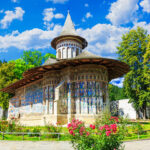
“Ciorbă rădăuțeană” is a traditional Romanian soup originating from Rădăuți, a city in Suceava County. The dish is a testament to Romania’s rich culinary heritage, showcasing local ingredients and time-honored cooking techniques. It was created by Cornelia Dumitrescu at the Nordic Restaurant.
The foreigners often stopped at the Nordic restaurant in Radauti for lunch or dinner, and wanted to eat something local, but the tripe soup was “too local”.
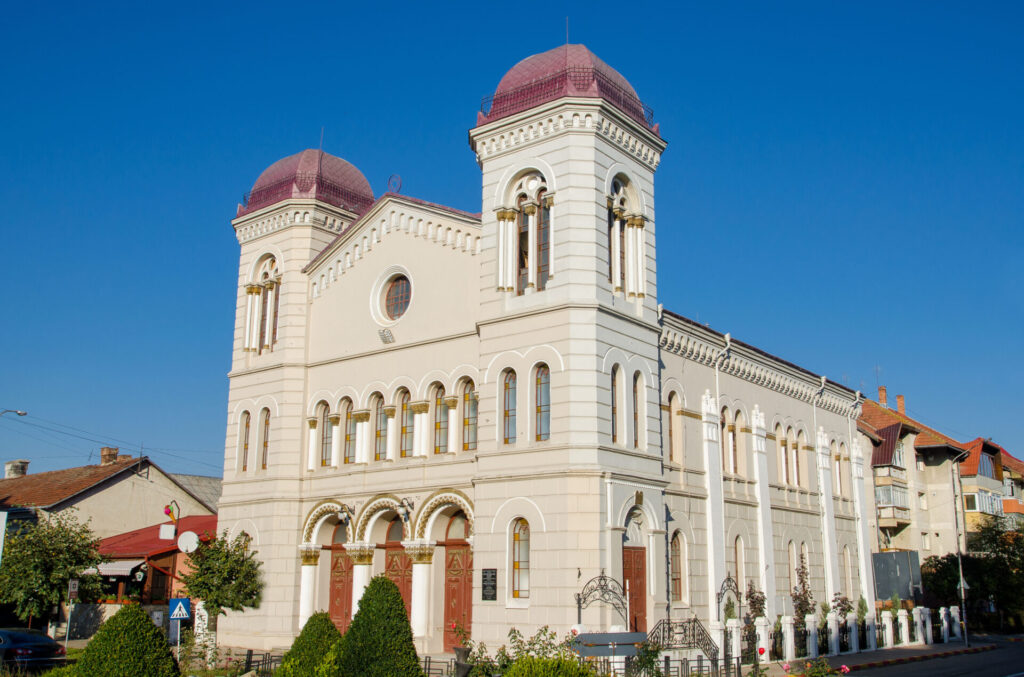
The foreigners, doing from Germany, UK or the Nordic European countries to visit the Northern Bucovina monasteries could not adjust to the tripe soup, which is the traditional Romanian dish made from beef tripe (the stomach lining of cattle) boiled with vegetables and then seasoned with vinegar, garlic, and sometimes hot chili peppers. The soup is creamy in texture and is often enriched with sour cream. It’s a delicacy that is beloved by many Romanians but might be an acquired taste for those unfamiliar with tripe dishes.
So, the Nordic restaurant cook, together with her boss, Calistrat Sotropa. who was the Commercial Director (do we call them now Marketing and Sales?), decided to replace the tripe, remember tripe is the stomach lining of a cow, with chicken breast, and the rest is history. The creamy soup with chicken breast was quickly named after the city, and voila “Ciorba Radauteana”. The foreigners loved it, the Romanians loved it, and is now a staple more popular than the Mcdonald’s hamburger in Romania.
A Brief History of Radauti
Rădăuți, situated in Suceava County in the northern part of Romania, is a city with a rich history that dates back many centuries. It is located in the historical region of Bukovina, which has been a crossroads of cultures and empires over the ages.
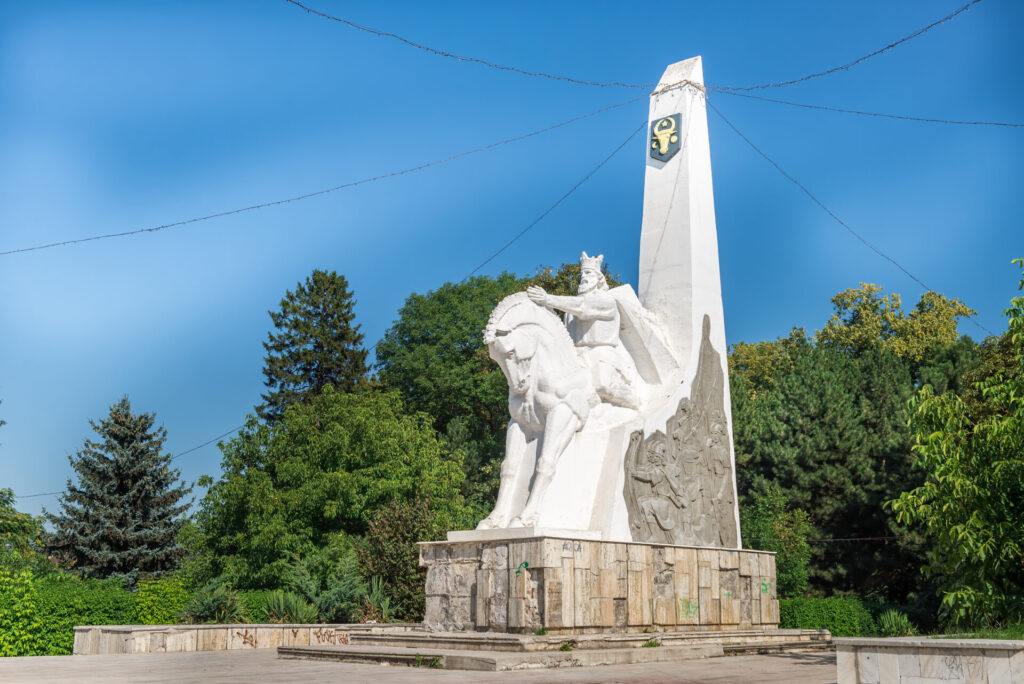
Here’s a concise history of Rădăuți:
- Ancient Times: The region around Rădăuți has been inhabited since ancient times, with archaeological finds suggesting the presence of Dacian settlements before the Roman conquest of Dacia.
- Middle Ages: The first written mention of Rădăuți dates back to the 14th century. By this time, it was a part of the Principality of Moldavia, a medieval state that existed from the 14th to the 19th centuries.
- Cultural and Religious Significance: In the 15th century, under the rule of Moldavian Prince Stephen the Great, Rădăuți became an important cultural and religious center. The Bogdana Monastery, which houses the tombs of Stephen’s family, is located here. It is the oldest still-standing religious building in Moldavia.
- Part of Various Empires: Over the centuries, the region of Bukovina, including Rădăuți, was ruled by various empires due to its strategic location. This includes the Ottoman Empire, although the region enjoyed a certain degree of autonomy.
- Habsburg Rule: In the late 18th century, following the Russo-Turkish War, the northern part of Bukovina, including Rădăuți, was annexed by the Habsburg Monarchy (later the Austro-Hungarian Empire). This period saw significant development, modernization, and an influx of various ethnic groups.
- World Wars: After World War I and the dissolution of the Austro-Hungarian Empire, Bukovina and Rădăuți became a part of the Kingdom of Romania. However, World War II brought turmoil, with northern Bukovina being annexed by the Soviet Union in 1940 as a result of the Molotov-Ribbentrop Pact. After the war, the borders were re-established, and Rădăuți remained in Romania.
- Modern Times: Today, Rădăuți is a modern city with a rich heritage. The city and its surrounding areas are known for their cultural landmarks, monasteries, and the beauty of the Carpathian landscape. The multicultural history of Rădăuți is reflected in its architecture, churches, and traditions.
The history of Rădăuți is deeply intertwined with the broader history of Bukovina and Romania. The city stands as a testament to the resilience and adaptability of its people in the face of changing political landscapes and historical challenges.
“Ciorba Radauteana” Creamy chicken breast soup preparation
“Ciorbă rădăuțeană” is a chicken-based sour soup. The main ingredients typically include chicken meat (often using chicken breast), garlic, lemon juice or vinegar to achieve the sour taste, yogurt, and a mix of vegetables such as carrots, parsnip, and celery root. Some variations might add rice or homemade noodles. A defining feature of this soup, differentiating it from other Romanian sour soups, is the addition of garlic sauce mixed with yolks and sour cream. This gives it a creamy texture and a richer flavor.
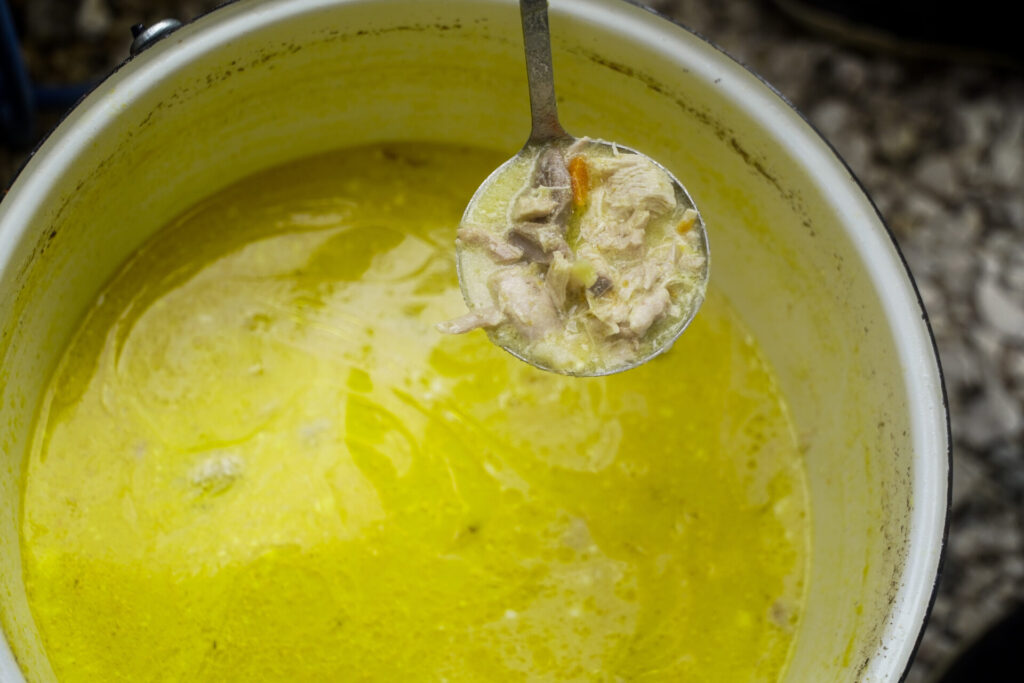
To make “Ciorbă rădăuțeană”:
- The chicken meat is boiled until tender. The foam that gathers on the surface is removed to ensure a clear broth.
- Vegetables like carrots, parsnip, and celery are diced and added to the pot.
- When the chicken and vegetables are fully cooked, the soup is soured with either lemon juice or vinegar.
- Separately, a mixture of egg yolks, sour cream, and finely minced garlic is prepared. Some versions also add flour to thicken the mixture. This mixture is tempered (slowly brought up to the soup’s temperature) by adding some hot soup to it, whisking continuously to prevent curdling. Once tempered, the mixture is added back to the pot, which gives the soup its distinctive creamy texture and rich flavor.
- The soup is served hot, often with fresh bread on the side.
Like many traditional dishes, variations exist based on regional and familial preferences, but the core essence of “ciorbă rădăuțeană” remains rooted in its creamy, garlicky, and slightly sour flavor profile.
What other Things to Try and See in Radauti?
Rădăuți, like many historic places, has its share of stories, legends, and folklore that have shaped its cultural fabric. While a comprehensive history of the city includes a blend of documented events and traditional tales, one particularly poignant story revolves around the Bogdana Monastery.
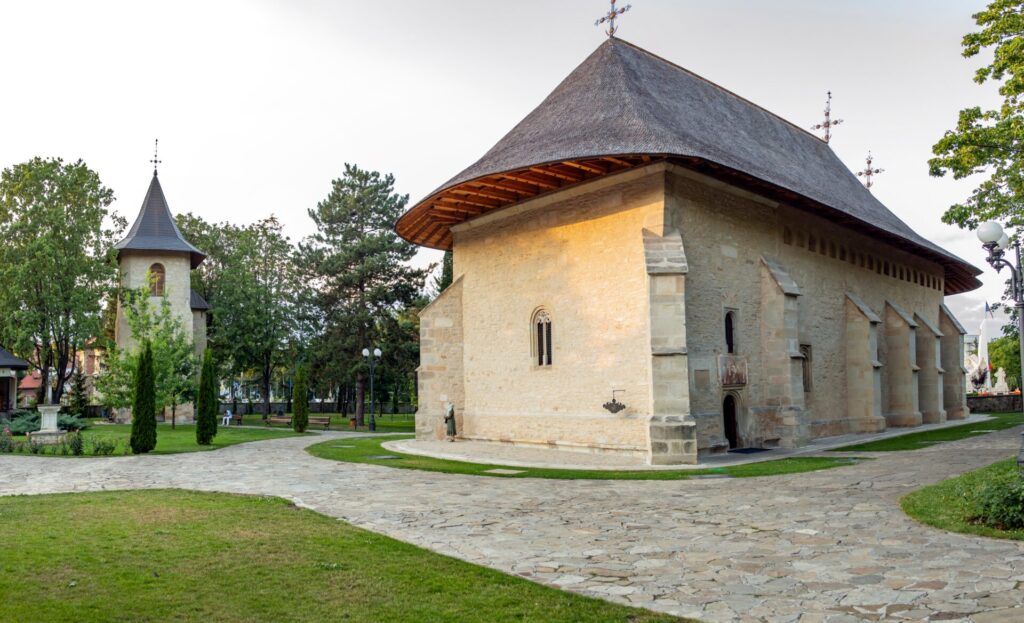
Bogdana Monastery and the Legacy of Prince Stephen the Great:
The Bogdana Monastery in Rădăuți, the oldest preserved church in Moldavia, isn’t just an architectural marvel; it’s a testament to love, dedication, and a prince’s determination.
In the late 14th century, the reigning prince of Moldavia, Bogdan I, founded this monastery. Legend says that his daughter, St. Anastasia, suffered from a severe illness. Despite seeking remedies, nothing seemed to cure her. Out of desperation, Bogdan vowed to construct a monastery in Rădăuți if his daughter were to be cured. Miraculously, she recovered, and true to his word, Bogdan I built the church which came to be known as the Bogdana Monastery. As a mark of gratitude and faith, St. Anastasia chose to spend the rest of her life in the monastery, becoming its first nun.
Years later, the famed Stephen the Great, one of Moldavia’s most iconic rulers, who reigned from 1457 to 1504, would also turn to the Bogdana Monastery in times of need. He, like his predecessor, made vows before significant battles, promising to build churches or monasteries if victorious. After one particular victory, he expanded and enhanced Bogdana Monastery, making it a symbol of his gratitude and the divine protection he felt.
This story, woven into the bricks and walls of the Bogdana Monastery, illustrates the deep connection between the rulers of Moldavia and their faith. To this day, locals and tourists visit Rădăuți and the monastery, drawn to its spiritual aura and the tales of devotion and dedication that it represents.
Are you tired of traveling to the same old European destinations like France, Italy, or Spain? If you’re looking for a unique and diverse travel experience, consider the hidden gems of the A Country A Month series, waiting to be explored. The author is an avid photographer and traveler. His favorite travel companion is his vintage leather-bound journal, in which he sketches and writes about his adventures.

